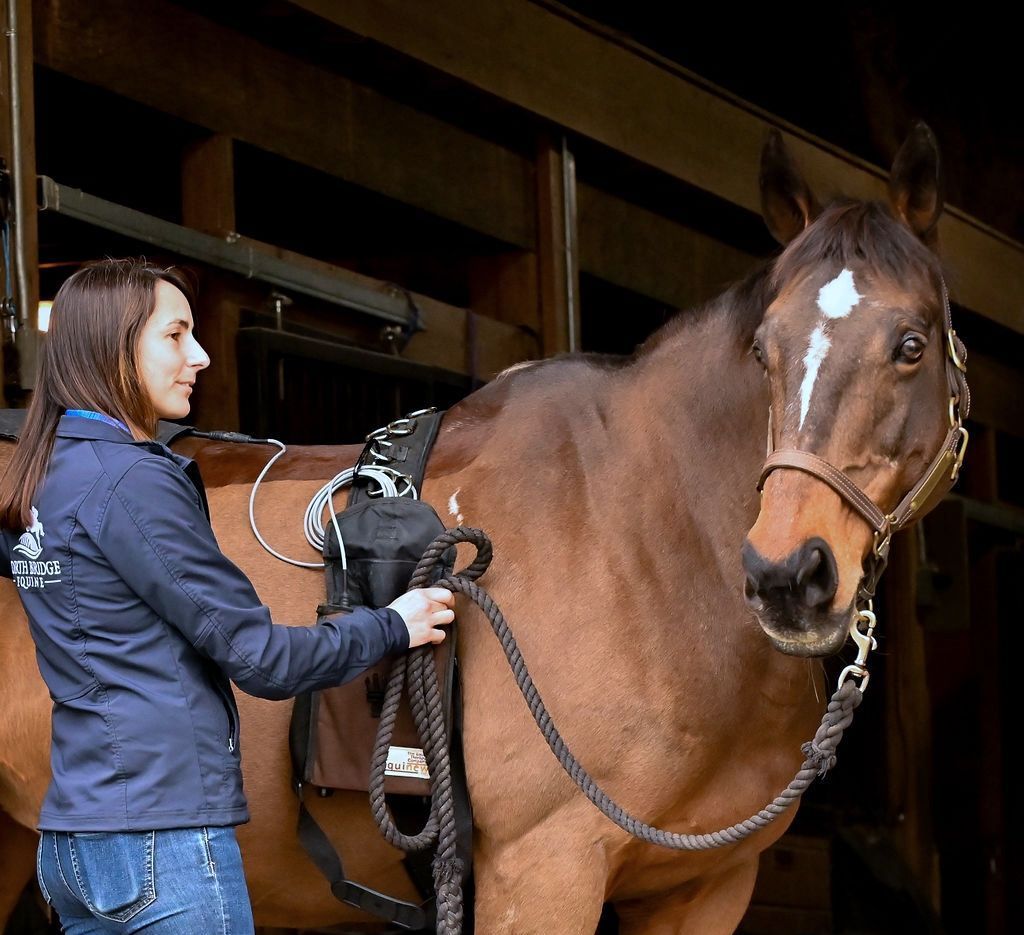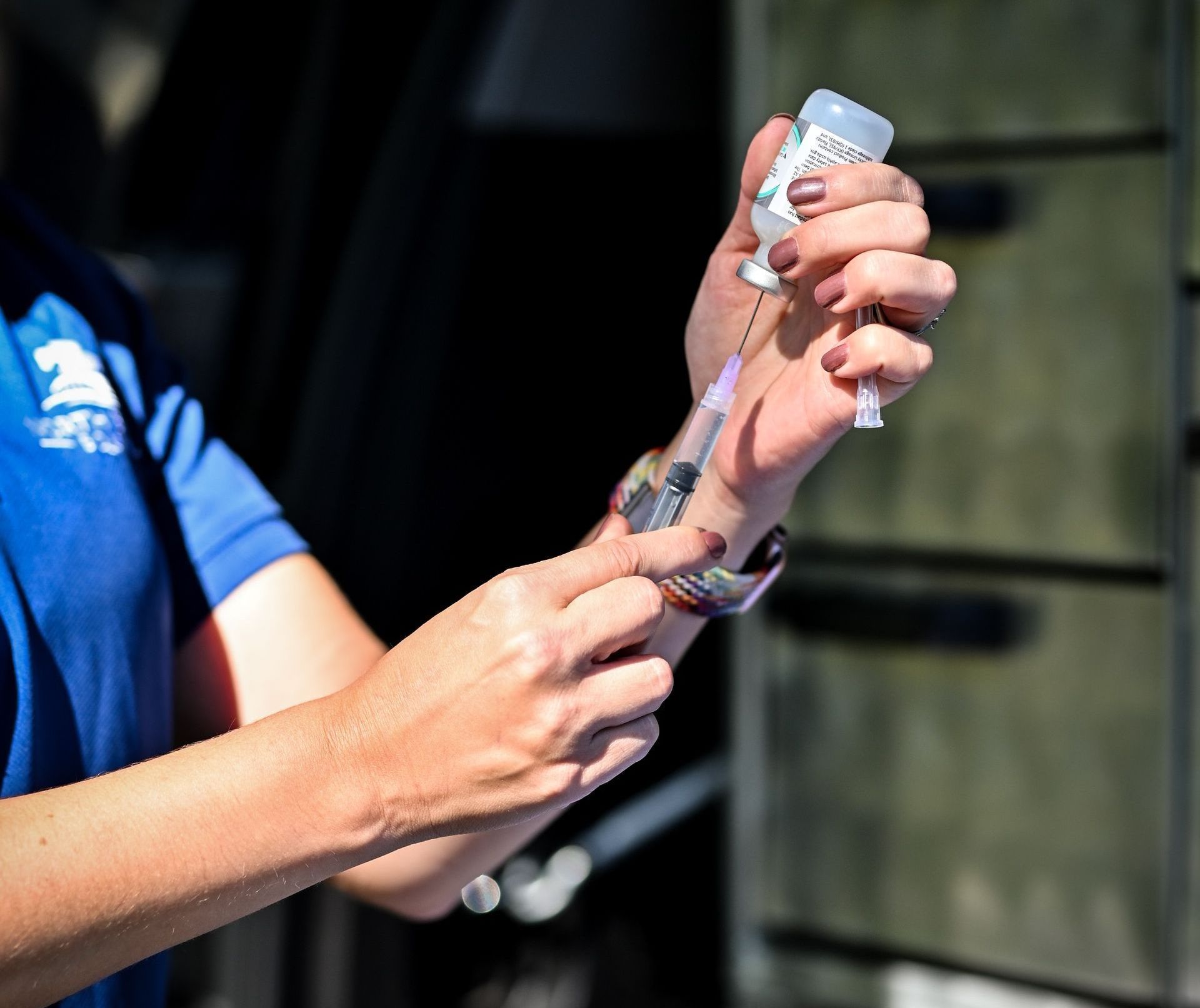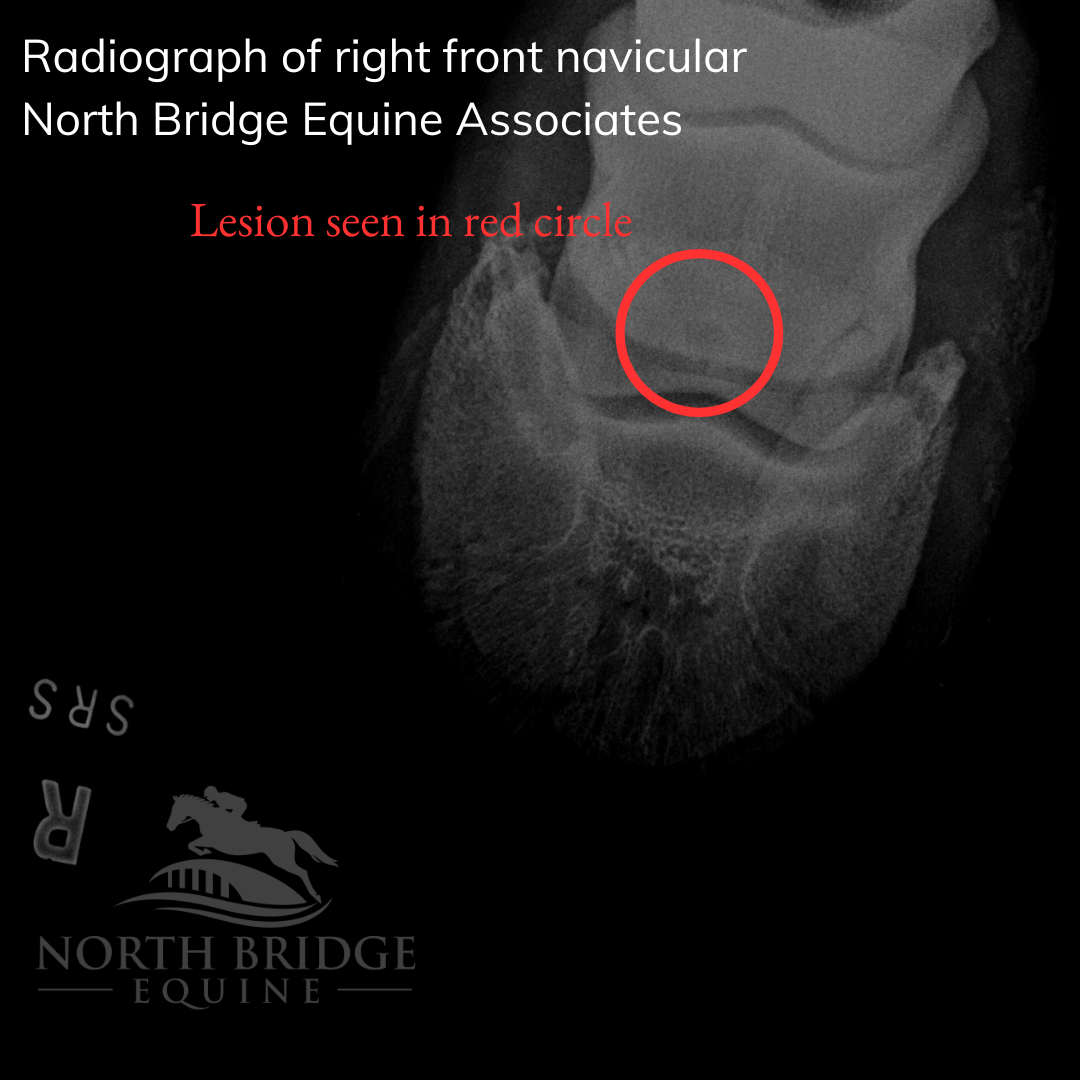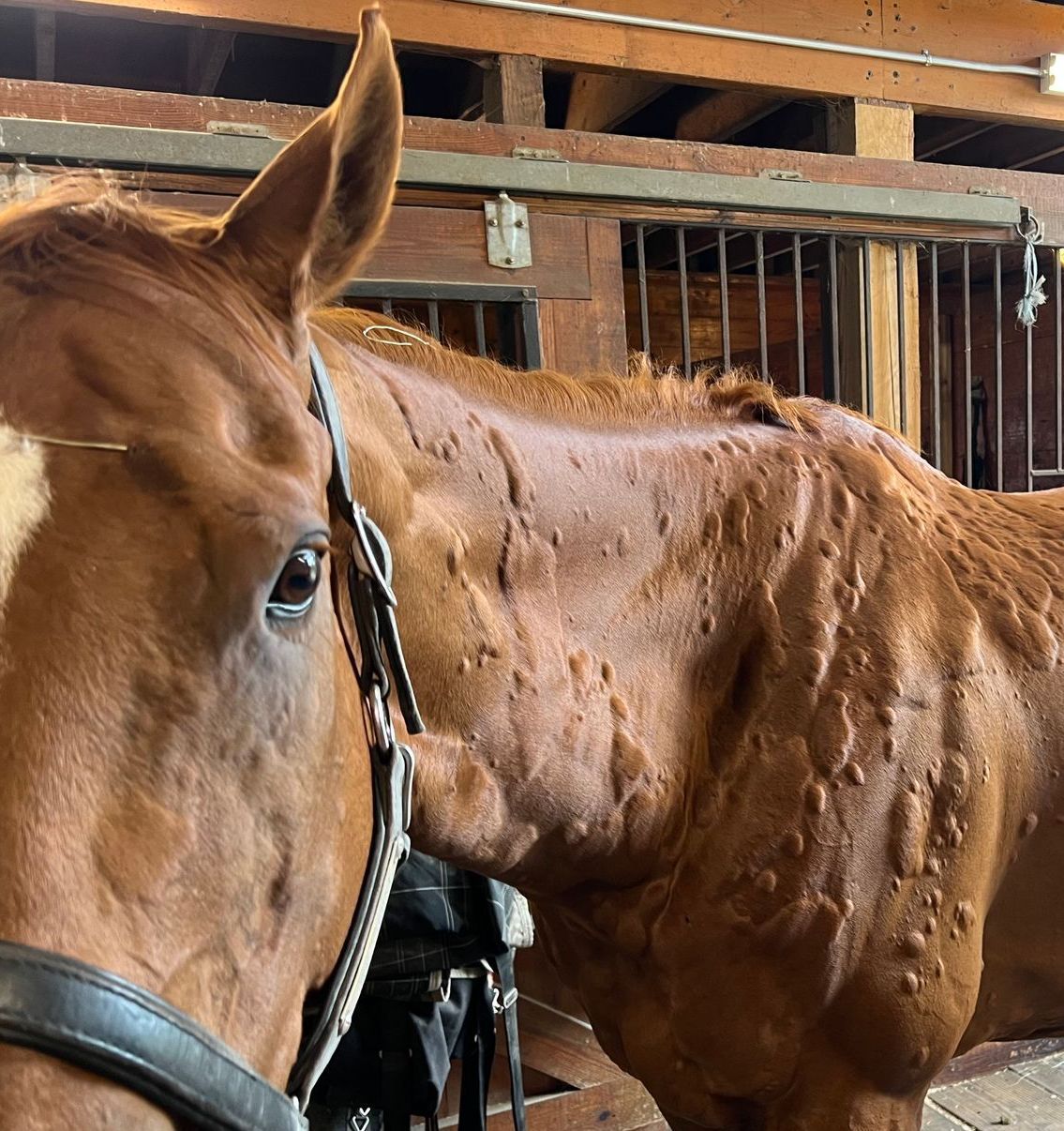Blog
Home
/ Blog
Mud Fever
Stephanie Shen, DVM • May 23, 2024
Learn the causes, treatments, and how to prevent.

Mud fever (also known as pastern dermatitis, scratches, dew poisoning, greasy heel, or cracked heels) is a common skin condition that affects a horse’s lower legs. It can be caused by irritation, bacteria, or fungal infection. Here’s what you need to know about mud fever:
Causes and Risk Factors:
- Bacteria: One of the most common causes is a bacteria called Dermatophilus congolensis, which lives naturally on the skin but can penetrate weakened skin.
- Wet Conditions: Mud fever is more prevalent during wet winter months when the ground is muddy and conditions weaken the skin.
- Other Factors: Photosensitivity, and chronic mange mites can exacerbate the condition.
Symptoms:
- Crusty scabs on the heels or lower legs.
- Broken or damaged skin.
- Matted hair or patches of hair loss with red, raw skin underneath.
- Discharge between the skin and scabs.
- Heat, pain, and swelling in the lower limb.
- In severe cases, lameness or cellulitis may occur.
Treatment:
- Clip the hair away from the affected area.
- Gently wash with an antibacterial or antifungal shampoo.
- Pat the area dry and apply a topical treatment (as directed by your vet).
- Keep the horse off wet pastures and in a clean, dry stall.
- Use zinc-oxide-based cream to soften scabs and create a moisture barrier.
Prevention:
- Keep footing dry in stalls and turnout areas.
- Use dry bedding.
- Avoid unnecessary washing of legs.
- Keep legs dry
- Maintain good hygiene
- Limit exposure to wet or muddy conditions.
Timely detection and effective management are crucial for treating and preventing mud fever in horses. If you suspect mud fever, consult your veterinarian for accurate diagnosis and tailored treatment.
Recent Posts

Discover the remarkable story of Penny, an 18-year-old chestnut Quarter Horse mare, who defied the odds to regain her soundness after a severe leg injury. Follow her inspiring journey from a crippling diagnosis to a triumphant recovery, all thanks to Dr. Shen's innovative care and unwavering dedication. Penny's story is a testament to resilience, hope, and the extraordinary bond between a horse and her vet.

Join us as we delve into the inspiring story of Flash, an elderly horse who found comfort and care at Barney's Home for Broken Animals. Discover how Jenna, Dr. Cory, and Dr. Shen worked together to address Flash's chronic conditions, including a complex eye surgery that brought significant relief. This case study highlights the importance of comprehensive veterinary care and the dedication to ensuring the well-being of senior animals.
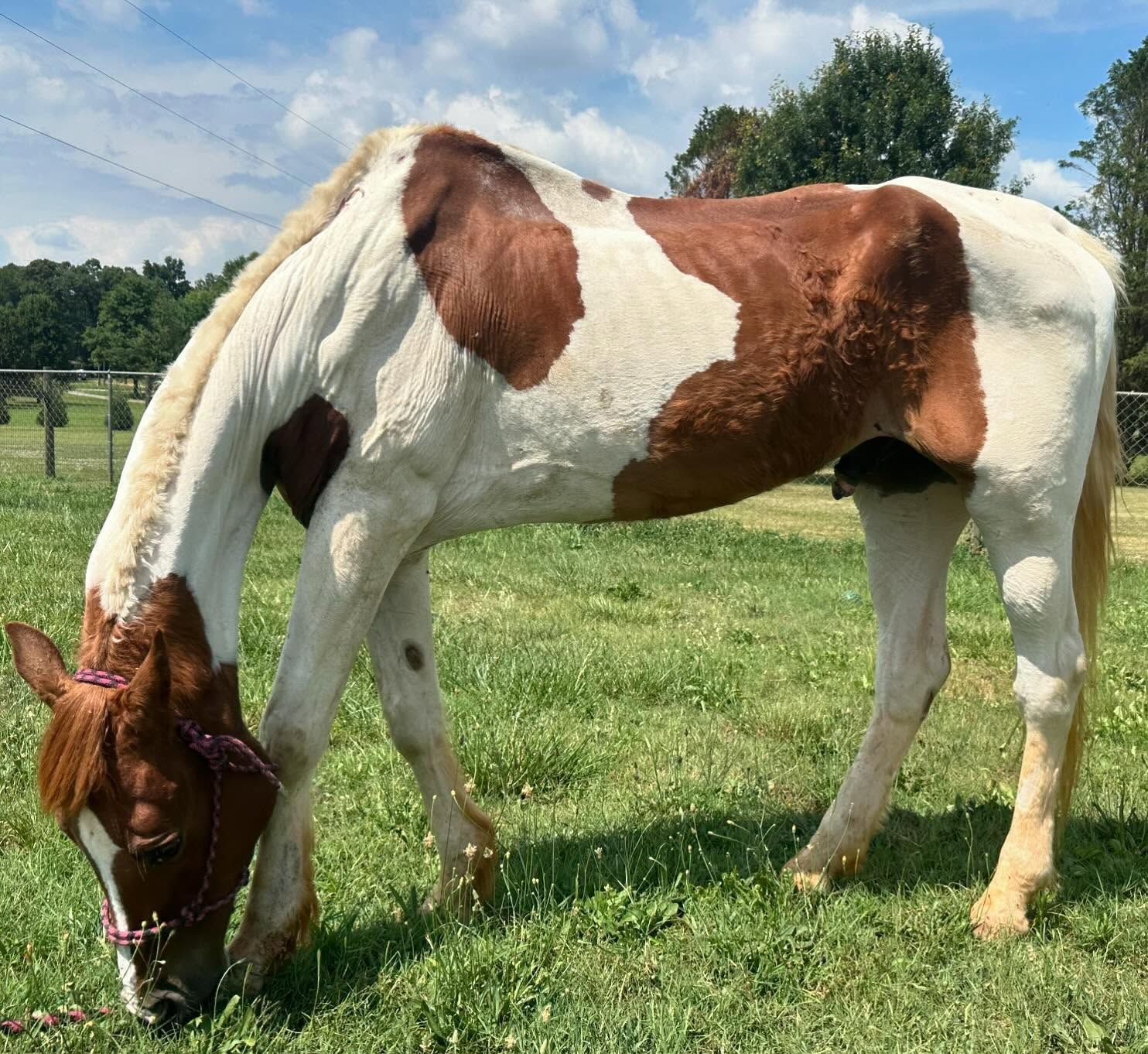
In this detailed guide, we explore the equine TRH stimulation test, a critical diagnostic procedure for assessing pituitary gland function in horses suspected of having Equine Cushing's Disease (Pituitary Pars Intermedia Dysfunction or PPID). This test helps identify excessive hormone production, especially adrenocorticotropic hormone (ACTH), which is a hallmark of PPID. From the preparation steps to the interpretation of results, this blog provides valuable insights into how veterinarians diagnose and manage this common endocrine disorder in older horses. Learn how early detection through the TRH stimulation test can aid in preventing significant health issues and improving the quality of life for affected equines.
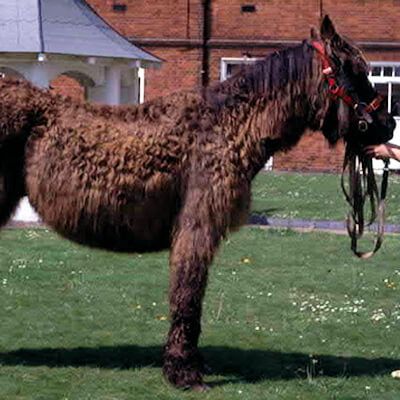
Equine Cushing's Disease, also known as Pituitary Pars Intermedia Dysfunction (PPID), is a prevalent endocrine disorder affecting horses, ponies, and occasionally donkeys. This comprehensive guide explores the causes, symptoms, diagnosis, and management of this condition, emphasizing the importance of early detection and proactive care. Learn about the role of the pituitary gland, common symptoms such as abnormal hair growth and laminitis, and the best practices for managing affected horses through medication, dietary adjustments, and regular veterinary care. By gaining a deeper understanding of Equine Cushing's Disease, horse owners and caregivers can ensure their equine companions lead healthier, more fulfilling lives.

Pasture Management for Springtime Grass After months of barren ground or snow covered fields, we are slowly starting to see the gorgeous signs of spring in New England once again. The horses are shedding and eagerly awaiting any chance they have to nibble some delicious green grass. Below we provide very helpful guidelines for the slow controlled introduction to keep our horses safe and healthy. Horses that always live outside have the benefit of mother nature's slow introduction to grass as it grows through the first weeks of spring. Horses living in stalls with only partial day turnout have to be more strictly controlled in their introduction to pasture to prevent the serious trouble that can occur with too much fresh grass too quickly. Over indulgence in grass can result in gas colic and laminitis. So what can you do to protect your horse from the potential hazards of too much grass too quickly? Here are guidelines to assist you in coming up with a pasture introduction plan: Horses on 2-12 hours a day of pasture: If you have limited pasture but still want your horse to reap the benefits of daily turnout you probably fall into this category. Most horses in a boarding situation with access to grass will be in this group. Take care to closely follow a pre-determined time scale of introduction for these horses. We recommend the following graduated schedule: Days 1-3: 20 min/day Days 4-6: 1hr/day Days 6-9: 2 hrs/day Days 10-12: 3 hrs/day Day 13 and beyond: unlimited in horses who are not overweight or sensitive. You can also use a grazing muzzle (see below) if you need to introduce pasture more rapidly. With a grazing muzzle you can add 20 min per day of turnout until on full turnout. Once on full turn out keep muzzle on for about a week then alternate every other day for a week then it should be safe to remove the grazing muzzle.

